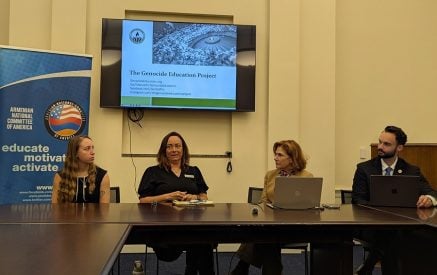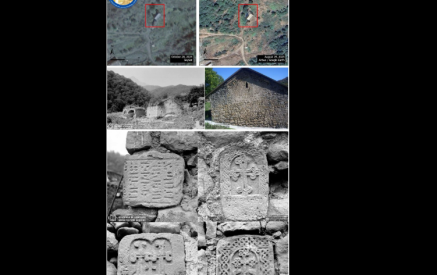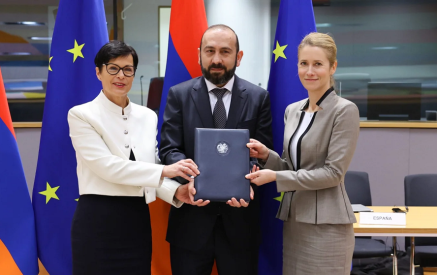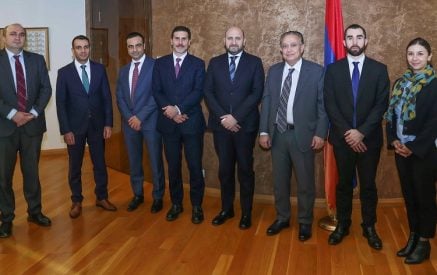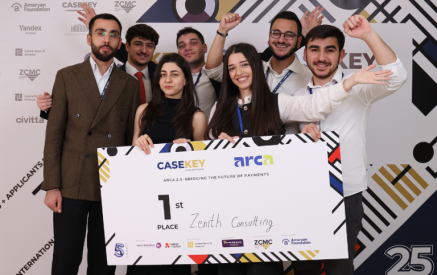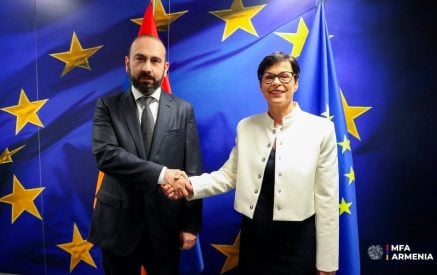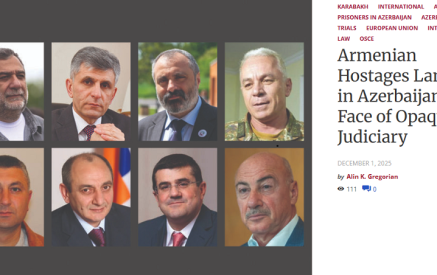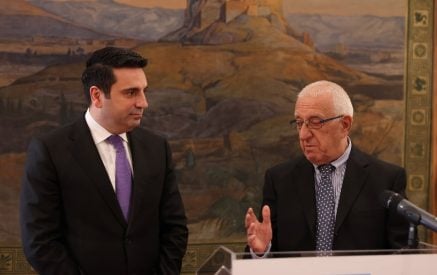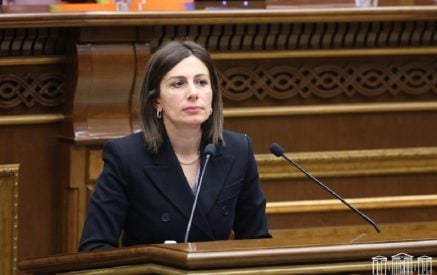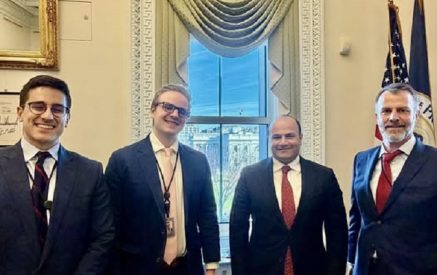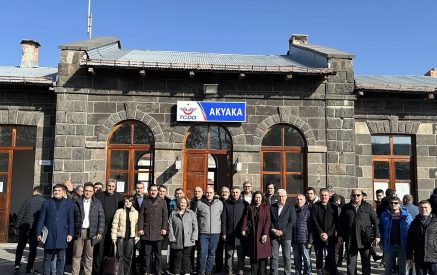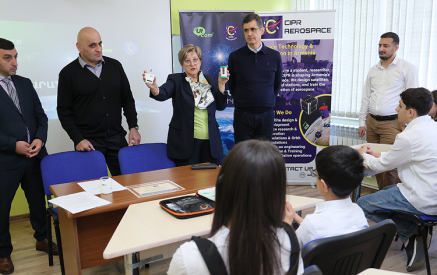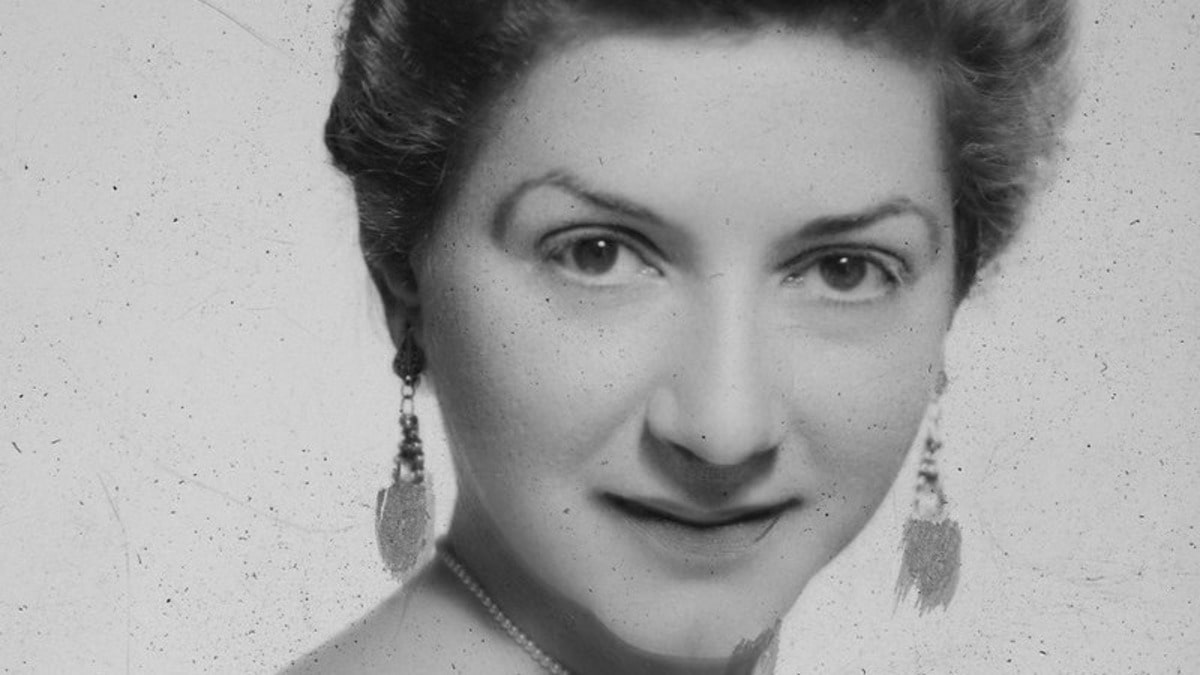Special to The Armenian Mirror-Spectator
By Gary A. Kulhanjian
I was motivated to write this tribute and remembrance of my friend and professional colleague on the 70th anniversary of her blockbuster novel, A Houseful of Love. It was in the dawn of her career and profession in higher education that led to her rightful acclaim.
She was widely published as a writer of fiction and non-fiction.
Read also
Born in New York City, she lived in Manhattan. Later she resided in Maine, Virginia, southern France, the Near East and Russia. She had three sons. She died in 2013, at age 90.
Returning to her celebrated novel, it included and described the temperament of many Armenian immigrants who settled in New York City by the 1920s and up to the 1950s. The author reminds her readers that the characters and their names were all fictitious; however, their personalities reflected many newcomers from different lands. The businesses of newcomers represented the multiplicity of ethnic groups of diverse origins also. The Armenian enclave moved up from 14th to 88th Streets in Manhattan. In later years, the Armenians moved uptown to Washington Heights, where they purchased a church which became the oldest Armenian institution in Manhattan. Some Armenians resided in Brooklyn and the other boroughs of New York City. When they congregated, they always reflected the names of the towns and villages they originated from in their ancestral land of Armenia occupied by the Turkish Empire. For example, Marashetsi, Smyrnatsi, Kesariatsi, Dikranagerdtsi and many other places in ancient Armenia under Turkish hegemony. These names were often misspelled in English. The Turkish government has changed many of these names in the locations after the 1915 Genocide with the deracination of the Armenian, Greek, and Assyrian populations.
In the novel, the Armenians who lived in a cosmopolitan area like New York and elsewhere, referred to non-Armenians as outsiders or “odars” in the Armenian language. These outsiders found the Armenians as a warm group who demonstrated emotions with their speech and manners. Sometimes an Armenian would take time to explain the culture and heritage to a non-Armenian. Many Americans had less contact with Armenians than a member of a larger ethnic or racial group. Her book was in a genre of its own creating scenes and episodes of the interaction of ordinary people. The book created a universal appeal to readers and the author’s style in manifesting the likenesses and differences of people from various corners of the world. The book should be read by future generations. Its appeal will grow more important in not only unifying human relations but the diversities that bring people together in a changing society and world.
Looking back in time, I remember my meeting Professor Housepian Dobkin in New York City at a conference on the 65th anniversary of the Armenian Genocide. The conference was sponsored by interfaith groups of Christians and Jewish congregational members. The first presenters were Housepian Dobkin and Prof. R. Hrair Dekmekjian. Their presentations dealt with “Reports by historians on the massacres; the background, and the events, and the results.” A group of survivors and psychiatrists and psychologists discussed the “survivor syndrome.” The two notable authors discussed a summary of the presentations. At the end program, I was able to walk through the gathering of people and introduce myself to Housepian Dobkin. She was quite pleasant and remarked about our future communication regarding the Armenian Genocide. From my meeting with her at the conference, we corresponded and met over several decades.
In 1972, her outstanding publication, The Smyrna Affair, was released by Harcourt Brace Jovanovich. The book was about the destruction of the city of Smyrna (now Izmir) a coastal port city in Turkey during the reign of Mustapha Kemal (Ataturk). The city had been left unscathed until Kemal decided to pillage it. The primary non-Turkic population, composed of Armenians and Greeks, were killed, imprisoned or put on a death march. The book was also published in Greece. It was also retitled and published as Smyrna 1922: The Destruction of a City in Great Britain by Faber and Faber. Kent State University Press in Ohio published a paperback of the historical account in 1988.
Brookdale Community College in Lincroft, NJ, developed a Holocaust Center under Dr. Seymour Siegler and Prof. Jack Needle. Dean Norma Klein of Brookdale appointed these two professors to develop courses and programs for the county and state. It was the first Holocaust Center created in New Jersey. A colleague of mine encouraged me to meet with Dr. Siegler and to tell him about the Armenian Genocide. Shortly after, I became an associate of the Center, and we planned on having lectures by noted Armenian scholars. I had an opportunity to invite Marjorie as the first presenter to the Armenian colloquium. She was followed by other scholars on the anniversary of the Armenian Genocide on April 24. Other Armenian community leaders followed the tradition of the program. The college has made many noteworthy contributions since its creation in both Holocaust and genocide studies.
As the years passed, I became active in teaching and lecturing about the Armenian Genocide, the Holocaust and about other genocides worldwide. Professor Housepian Dobkin and I kept in touch about our lectures and news about the deniers of the Holocaust and Armenian Genocide. By 1982, she was invited to attend an International Conference on the Holocaust and Genocide. Her lecture was titled “What Genocide? What Holocaust? News from Turkey, 1915-1923: Case Study.”
Her dedication for the inclusion of the Armenian Genocide was observed by her lectures, activism and articles with the inclusion of the Greek tragedy during the first quarter of the 20th century. Around 1986, I received a call from a friend who asked me to present a lecture on the Armenian Genocide at Middlesex County College (now Middlesex College), in New Jersey. After informing him that I had the flu, I suggested calling Housepian Dobkin. She accepted the invitation on short notice. She made a remarkable impression on the students and faculty who attended her lecture.
By 1993, The Armenian Center at Columbia University published Denial Of The Armenian Genocide: Compounding The Crime by Housepian Dobkin as editor, with the assistance of Leon Hamalian and Christine Simone. A group of erudite scholars took part by contributing noteworthy articles in April 1990, on the 75th anniversary of the Armenian Genocide.
Marjorie Housepian Dobkin made a most impressive impact as a leader at Barnard College, Columbia University, as associate dean, professor of English and outstanding scholar. She will always be remembered for her activism in Armenian studies as well as feminism. Her portrayal of Armenians in A Houseful of Love remains as relevant as when it was published.
Over the years of our friendship, she always gave me good advice. Her most important advice and on a personal point was in one of her earliest correspondents. Her research and input into the modern history of the Armenian people, and the 1915 Genocide should never be forgotten. She said, “I can understand how overwhelming this all is – and also grateful that YOU understand how important it is not to feel all alone.” She was a pioneer for others to emulate and follow her example.
(Gary A. Kulhanjian, Social historian, former member of the New Jersey Commission on Holocaust Education Holocaust and appointed by three governors representing the Armenian constituency for ten years. He now resides in California with his family.)








